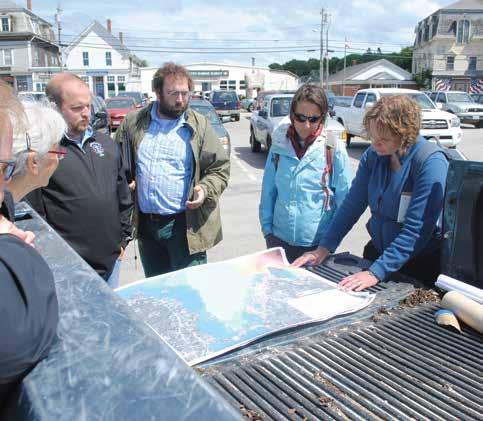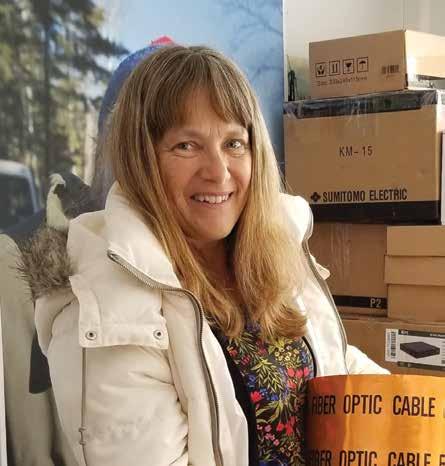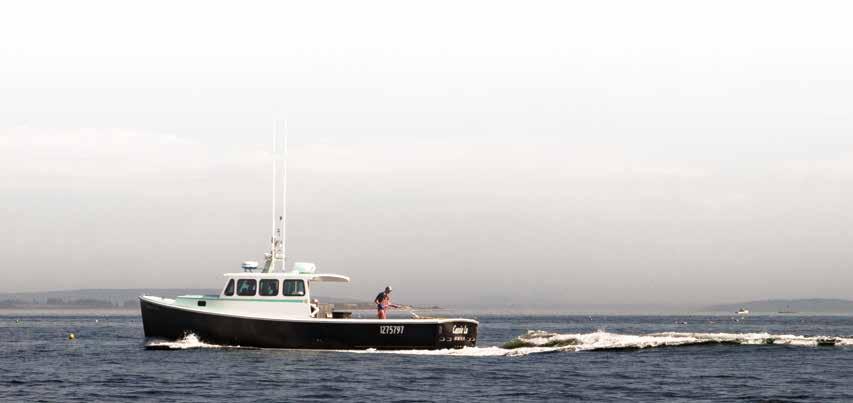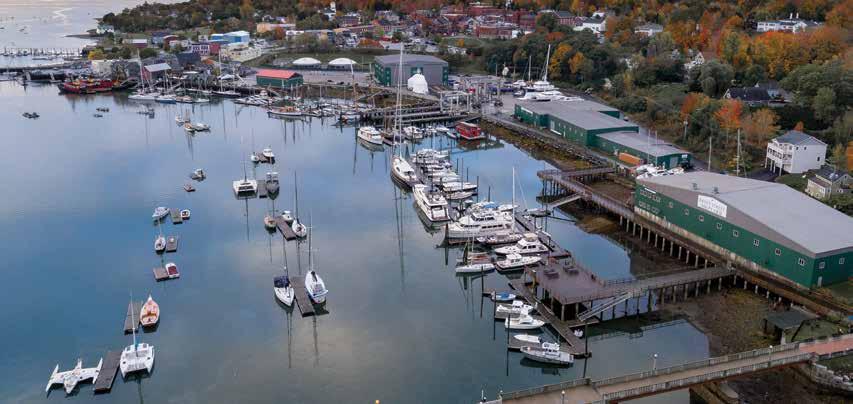
3 minute read
Connecting Remote Communities to the World
Rural coastal communitites strategize to build broadband networks that will provide access and opportunitites for young and old.
LACK OF ACCESS TO FAST, RELIABLE, AND AFFORDABLE INTERNET service has long been a leading factor working against the sustainability of small town life on the coast of Maine. Rural towns with poor internet service are finding it difficult to attract young families. Businesses are unlikely to locate where internet service is spotty, and senior residents increasingly rely on dependable communications networks to support their ability to age in place. Lisa Hanscom knows this as well as anyone. She owns a family-run blueberry business and manages a pair of Airbnb rentals located at her farm in Roque Bluffs, a small community of 300 people in Downeast Maine. She served as first selectman, and as such, is well acquainted with the struggles of residents to access good, reliable internet service. “We have inadequate internet to advertise blueberry products, interact with buyers, and deal with rental customers. I am unable to increase the quality and quantity of my businesses specifically because of the poor internet speeds,” she says. The community recently came together to bring broadband to the entire town in locations where internet is poor or even inaccessible. “There are many more of me—farmers, fisherman, lobster sellers— who are either paying exorbitant prices for better connectivity or are struggling to make this inadequate technology work for them,” Hanscom says. “I hope that we will not have to wait 30 years to lift all of our boats, all of our communities, to bring this real opportunity to all of those who dream to better themselves and their families.” High-speed, reliable internet service ensures equitable access to education and healthcare, supports civic engagement, and spurs economic diversification and development. Geographic isolation and sparse populations mean Maine’s rural communities lag behind the rest of the nation in quality of internet service and economic productivity. More Maine towns are realizing a future backed by broadband is possible through improved planning. They are starting the process by forming
Advertisement
ROQUE BLUFFS In Roque Bluffs, residents who planned to run businesses out of their homes had to sell because their internet service was so slow. Home-bound, elderly patients cannot connect over the internet in order to interact with their doctor or nurse. Elementary, high school, and college students must drive 30 minutes roundtrip into Machias to accomplish their online homework, and older continuing education students cannot complete their online exams because of the inconsistency of their internet connectivity, in some cases resulting in not being able to pursue their career of choice.
The Cranberry Isles community celebrates an award to complete its broadband project after leveraging planning grants to support their application for USDA funds.
community broadband working groups to bring in local residents with diverse backgrounds. More than one-third of the coast lacks a strong economic case for providers to build out broadband infrastructure for 21st century internet service. As they see the digital divide widening, many island and coastal communities are taking charge by developing community-driven broadband solutions that will result in a stronger economic future for all. Communities like the Cranberry Isles (above) are utilizing local financing options and regional collaborations to get the job done.
SWAN’S ISLAND
SWAN’S ISLAND Like many rural municipalities along Maine’s coast, Swan’s Island is made up of multiple villages, where internet service varies widely within the community. By bringing in diverse perspectives and seeking creative financial options, broadband can be brought to whole communities. On Swan’s Island, a citizen working group is designing and assessing broadband infrastructure options that can be built and operated either by the existing provider or with other potential providers to find balance between the community’s goals and risk.
0 NONE 1-6 VERY LOW 7-15 LOW 16-22 MEDIUM 23+ HIGH Addresses Per Mile, 2019






